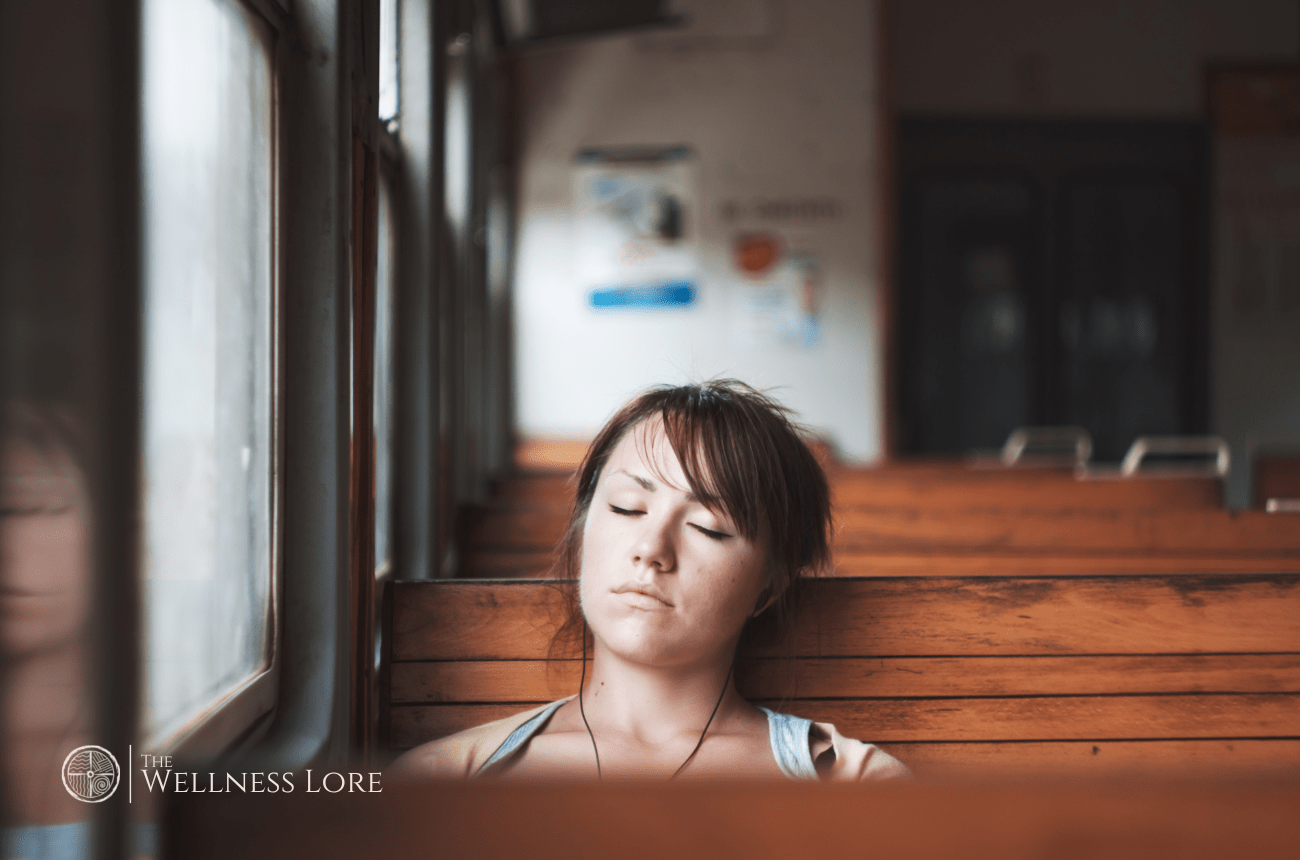Inemuri – the Japanese art of taking naps in public

We have naps and siestas in Western society, but they are substantially different from the entirely Japanese practice of inemuri. Inemuri means ‘sleeping on the job,’ although a more realistic description would be ‘being present while asleep.’ Inemuri sleeping at railway stations, in class, or on the mall steps are far more prevalent in Japan than in America or Europe. Furthermore, it is socially acceptable. This Japanese phenomenon offers a unique perspective on the art of napping (but not sleeping) in public.
The term inemuri consists of two parts:
‘i’ means ‘to be present,’ and ‘nemuri’ means ‘to sleep.’ To practice, inemuri means “to be present while sleeping.”
To understand how regular naps differ from practicing inemuri, we must first understand Japanese people and their perspectives on sleeping. In Japan, rising early at dawn and going to bed late because of work or study is considered a dedication to one’s career. So, if you fall asleep in public, in a sitting position, at a meeting, or in the middle of a lecture, this demonstrates severe weariness caused by hours of rigorous work or study.
History
Inemuri, a millennium-old habit, also provides an unusually slanted view into various parts of Japanese society. Like the concept that co-sleeping with children until they reach school age can reassure them and help them develop into autonomous and socially secure individuals. That, together with Japan’s well-known high degree of public safety, makes individuals feel more at ease with falling asleep in a public or quasi-public setting.
Since the beginning of civilization, people have taken the occasional snooze in public. However, the more particular concept of inemuri took off during Japan’s postwar economic boom. Japan’s economic miracle of the 1960s, 1970s, and 1980s saw the country expand rapidly and establish itself as one of the world’s major powers. For the most part, life was good. People had more money, employment, and money to spend on leisure activities. As a result, everyone got extremely busy. The Japanese consider it an honor when being recognized as a diligent nation that never sleeps.
Understanding the inemuri culture
People in Japan strive to appear to be dedicated, diligent workers. Sleeping during meetings, classes, social gatherings, and so on may seem paradoxical, but it is how they demonstrate their devotion and hard work. Sleeping at work is not only accepted in Japan but may also be encouraged by employers. The common consensus is that sleeping is OK if you are not trespassing, blockading, or disrupting the peace.
According to the OECD’s 2019 Gender Data Portal, Japan has the world’s lowest average sleep of 442 minutes per day or around 7.3 hours per night. To compensate for the lost sleep time, the Japanese may have developed the ability to sleep almost anywhere. As a result, inemuri.
Another clue to the complex rules of inemuri is from the word itself, which means to be present when sleeping. Even if the sleeper is mentally absent, they must be able to return to the social setting at hand when active participation is necessary. Your body must seem busy at a meeting, as though you are focusing. You are not permitted to sleep under the table or anywhere else. You must sit as though you are intensely listening and just put your head down.
Why is inemuri highly accepted in Japan in comparison to other countries?
Japan produces an atmosphere where many contributing components work together to suit Inemuri. The Japanese are fundamentally more hardworking when compared to the United States of America and Europe, and overtime is a prevalent work culture among Japanese people.
Another regular venue for inemuri is in the early morning hours in the Shinjuku and Shibuya nightlife areas. The Japanese place a high value on public transit. After a night of drinking, it’s not uncommon to see men sleeping on steps, on public benches, and even on the floor while waiting for trains to begin service.
Benefits of inemuri
Inemuri is a casual feature of Japanese social life meant to facilitate the fulfillment of regular tasks by giving a chance to get away from these responsibilities for a brief time. It has also been shown to provide several benefits, such as helping in enhancing performance, creating a better mood, and preventing exhaustion. Taking a nap in the afternoon also helps reduce the risk of fatal heart diseases by almost 37 percent. Finally, inemuri can also help in having a positive influence on short-term memory. Hence, the Japanese practice of inemuri does not imply laziness. Instead, it is a casual feature of Japanese social life meant to facilitate the fulfillment of regular tasks by giving a chance to get away from these responsibilities for a brief time.
The rules for inemuri
Here are some tips for sleeping in public the inemuri way:
- Use your bag as a cushion or tilt your head up or down when sleeping on the train. It’s better to use your bag as a cushion in case someone attempts to rob you.
- Rest your head on your desk when napping at work, but do not lay down beneath it. Remember that inemuri is sleeping while present, not sleeping as one does while taking a nap.
- Do not use the person’s shoulder next to you as a cushion unless they’re a friend.
- Maintain silence in crowded public areas. Snoring is strictly prohibited.
- If you set alarms, wear headphones, or put your phone on vibrate. Try not to irritate anyone around you.
- If you’re traveling with someone who has inemuri, wake them up before you get to your destination.
FOMO and Inemuri – an interesting relationship
The 21st-century phenomenon known as FOMO, or ‘fear of missing out,’ plays a significant part in the growing popularity of inemuri, in which individuals prefer sleeping in uncomfortable places rather than on their mattresses. It is also due to individuals not wanting to miss out on recreational activities or crucial occasions. The Japanese opt to forego sleep to participate in exciting activities or events. The activities have also multiplied in the modern period, making it hard not to suffer FOMO. There are so many options available that time has become a factor. That is when inemuri comes into play.
Taking a break from work boosts morale, productivity, and employee health and well-being. Japan is not the only country that allows individuals to sleep in public spaces. Other nations have similar customs, such as the Spanish siesta (an afternoon nap commonly taken after a midday meal) and the Italian riposo (an extended lunch break between noon and 4 pm to allow people to go home and rest).
Sleeping is a fundamental human need, and it is common knowledge that humans need 7 to 8 hours of sleep daily. Getting enough rest isn’t always easy in our stressful lifestyle, and sleep deprivation can lead to serious health problems. Companies globally are increasingly supporting office naps as a cost-effective and practical technique for enhancing productivity. Napping at work is a concept encouraged in several companies, including Google, Apple, Nike, BASF, Opel, the Huffington Post, and Proctor & Gamble, which provide dedicated napping rooms and sleeping pods for employees to take short naps during office hours.
More Recent Stories



